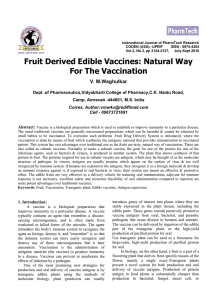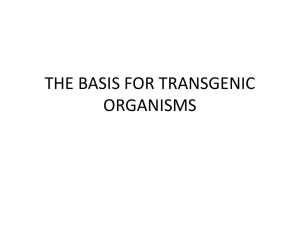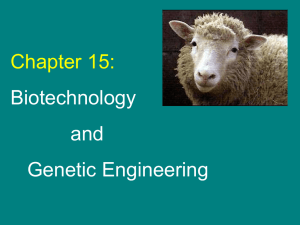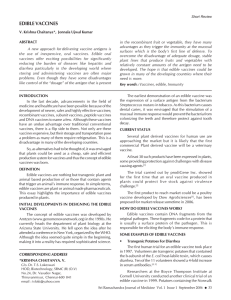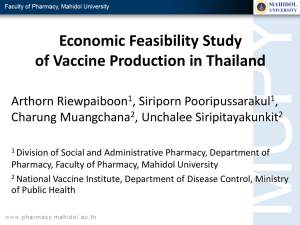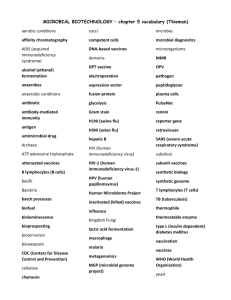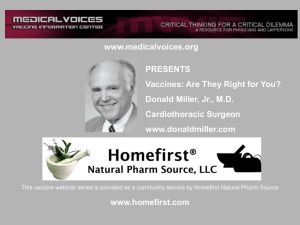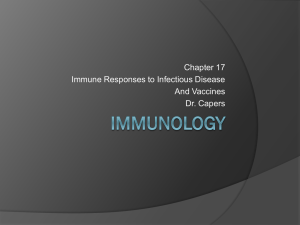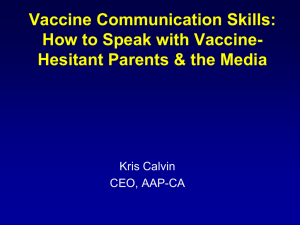PRODUK DNA REKOMBINAN
advertisement
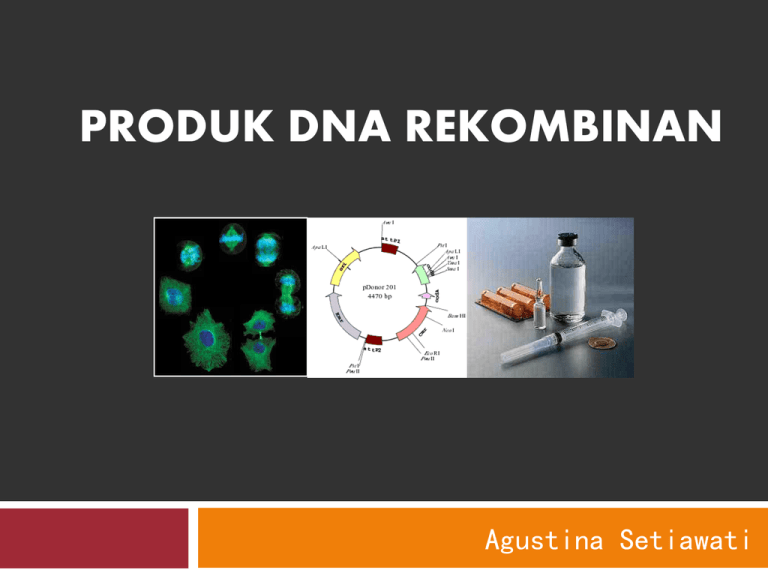
PRODUK DNA REKOMBINAN Agustina Setiawati Prinsip DNA rekombinan STRATEGI KLONING GENA EUKARIOT Isolasi total mRNA dari jaringan ttt Ubah mRNA menjadi cDNA Sisipkan pada vektor ekspresi Transformasi Isolasi protein produk PROTEIN FARMASETIK HASIL REKOMBINAN Produksi Insulin Proinsulin Berg JM, et al, 2002 TRANSGENIC PLANT EDIBLE VACCINE VIRUS-RESISTENT PLANT EDIBLE VACCINE Edible vaccines are vaccines produced in plants that can be administered directly through the ingestion of plant materials containing the vaccine. Eating the plant would then confer immunity against diseases. Edible vaccines produced by transgenic plants are attractive for many reasons. The cost associated with the production of the vaccine is low, especially since the vaccine can be ingested directly, and vaccine production can be rapidly up scaled should the need arises. Edible vaccine is likely to reach more individuals in developing countries. The first human clinical trial took place in 1997. Vaccine against the toxin from the bacteria E.coli was produced in potato. Ingestion of this transgenic potato resulted in satisfactory vaccinations and no adverse effects. What exactly are “edible vaccines?” • Biopharmaceuticals • Plants or crops that produce human vaccines • The next generation of vaccines ALUR PEMBUATAN EDDIBLE VACCINE VIRUS RESISTANT PLANT Transgenic Animals SOMATIC NUCLEAR CELL TRANSFER Transgenic animal was constructed based on SNCT by Robert et al (1952) DOLLY SHEEP, first succeed cloning Uses for transgenic animals Gene pharming Food/Feed Xenotransplantation Industrial Transgenic Animal The foreign gene is constructed using recombinant DNA technology. In addition to a structural gene, the DNA usually includes other sequences to enable it to be incorporated into the DNA of the host, and to be expressed correctly by the cells of the host. Recombinant protein production in the milk of a transgenic sheep GENE THERAPY Agustina Setiawati, M.Sc., Apt DEFINITION 1. Gene therapy is a technique for correcting “defective” genes responsible for disease development. 30 Want to know more? Just ask! dank u

